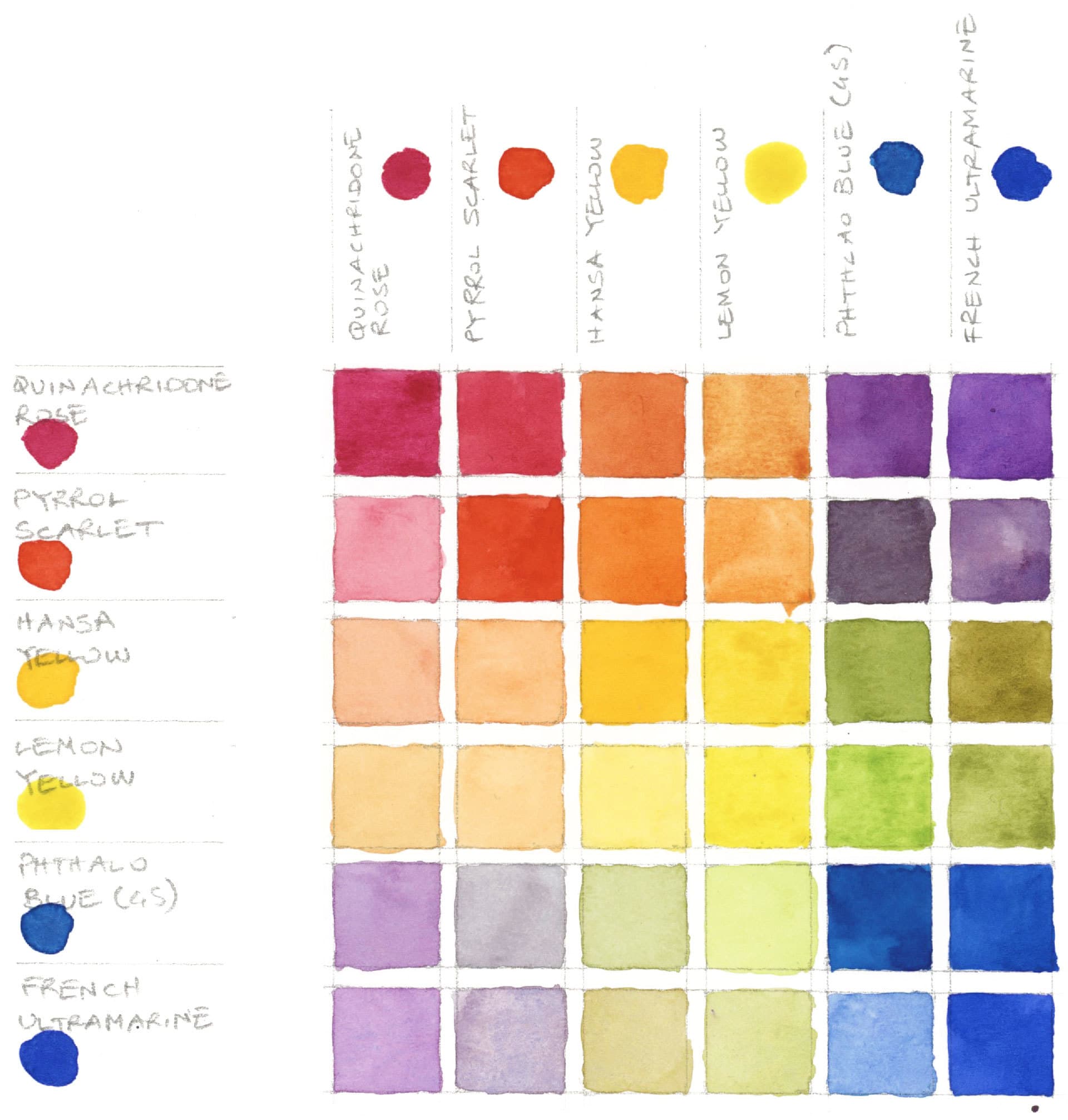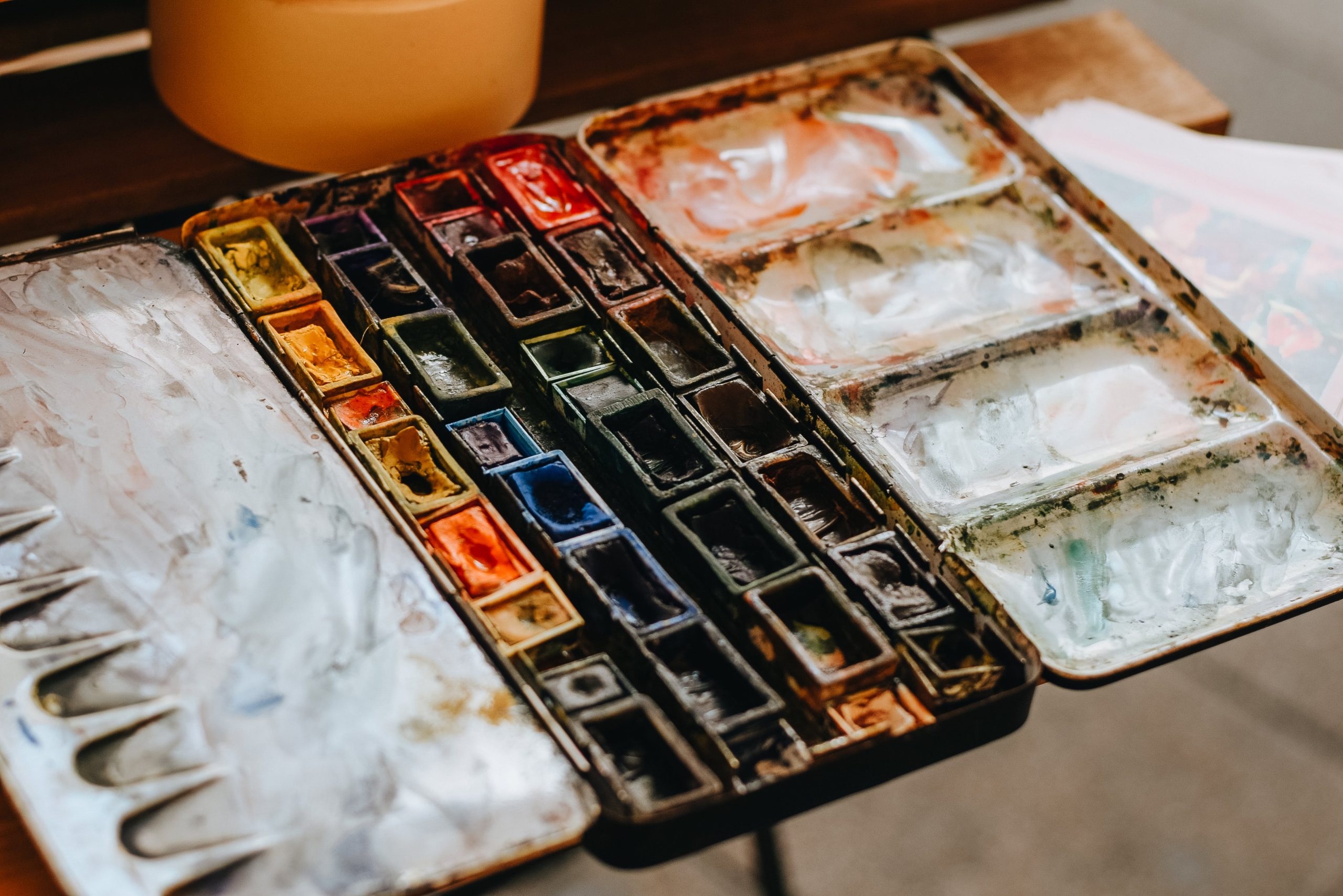Contents
What is watercolor painting?
Watercolor painting is the application of thin washes of transparent color that involves the fluid balance between artistic control and freedom.
Simply put:
It is the process of painting with pigments that are mixed with water.
Artists’ application of watercolor dates back from the prehistoric period but has also been acknowledged during the Renaissance and ever since, has gradually modernized overtime.
Falling under the umbrella of painting mediums, watercolor allows for an expressive and highly impressionistic style free of strict precision.

What are watercolor paints made of?
Watercolor paint consists of fine pigment particles suspended in a water-soluble binder, capable of being picked up and moved freely by a brush.
These pigments are typically derived from organic materials but can also be made from inorganic minerals and synthetic chemicals.
Every watercolor manufacturer has a unique formula and method of production leading to differences in consistency and handling qualities between brands.
For example,
Sennelier artist-grade watercolors are honey-based, leading to smooth paints capable of exceptionally clean gradients and glazed layers more so that what other brands such as Daniel Smith could achieve.
What are the different types of watercolor?
The main two forms of watercolor are pans and discs or tubes.
Paint pans and discs usually come in a set, with pigment easily activated by a wet brush. While also capable of coming in a set, paint tubes are available in individual hues and can be made into custom colors.
Now discs and tubes aren’t the only types of watercolors.
In addition to these key forms, watercolor pencils and markers can also be mixed in an artwork due to the strong pigment of pencils and precision of markers.
Why choose watercolor painting?
Watercolor is a highly versatile paint medium, effective for learning and developing general painting skills. It is non-toxic, marking it particularly popular for children’s use as well as quick painting sessions to fulfill your creative cravings.
At times, watercolors can be unforgiving and unpredictable but by embracing “happy accidents”, you will surprise yourself at the results.

The plethora of techniques at your fingertips are enormous. This means that the ways in which you are able to express yourself are vast, and truly is one of the many wonders of why watercolor is loved by so many painters.
Still not convinced?
Here are the…
Key benefits of watercolors:
- Inexpensive: Starting can begin at a low cost with the essentials only including good brushes, a set of watercolor paints and paper designed for the medium. It is later however, when you may decide to invest in proper cleaning tools, solvents and other additions that may further streamline the painting process.
- Non-messy: The water-soluble quality of pigment makes it difficult to damage brushes even if you forget to wash them (washing brushes is good practice despite this). Unlike other paint mediums, cleaning solvents and tools are not required and there is no risk of ruining clothes, furniture or staining skin.
- Non-wasteful: Accidentally squeezing out an excess amount of paint can be left to dry and reactivated next painting session with a small amount of water.
What art supplies do you need to get started with watercolor painting?
It is extremely easy to get overwhelmed with the vast choice of painting supplies.
Especially in the beginning stages, the wrong choices can have a real negative effect on your overall painting experience with watercolors.
For example:
Poor quality sketch paper – although relatively cheap and inexpensive – will never be capable of handling watercolor paints the same way as true heavyweight, watercolor specific paper will.
However, wisely investing in your materials now will save you money in the future by avoiding wasting money on ‘gimmicky’ products that compromise the quality of your paintings.
The fundamental supplies you will need to get started with watercolors are: paint, paper and brushes (the quality and price-points in which these materials come in vary dramatically).
Paint
In terms watercolor paint, I’d recommend to invest in high-quality, artist-grade lines such as Daniel Smith’s professional range of paints.
Here’s a great set of 10 that I’d definitely invest in if you’re serious about watercolors and plan to work with the medium in the future (this color range can always be expanded). This is to avoid abandoning cheap quality paint brands in the future as your watercolor skills broaden over time.

However, if you really are on a budget:
I’d still recommend an artist-grade line but just a smaller range of colors such as this Daniel Smith introductory set of 6.

Don’t be led into the belief that such a limited variety of colors will restrict your painting hues – watercolors mix beautifully as they are water-based and you’d be surprised with the range of pigments you can reach with this simple set.
See for yourself!

Alternatively,
Student-grade watercolor lines such as Winsor and Newton’s Cotman set are still fine to work with. Keep in mind that these paints set at lower price points will have a lower pigment load, leading to a final appearance that is less vibrant.
A good starting point is the Winsor and Newton
As for black and white watercolor pigments:
You don’t need these, especially if you’re just starting out. If you really love adding some highlights on top of your watercolor, consider purchasing a white gouache paint tube which will lead to opaque touches.
Brushes
Brushes are the tools in which translate your artistic intentions onto paper. To get started, it’s the simple matter of finding three brushes of differing sizes.
When choosing and purchasing a brush, make sure that the brush is specifically designed for watercolor as a medium, as those specified for acrylic or oil will not handle the paint in the same way.
In the watercolor world, a general consensus is that the best watercolor brushes used for painting are those crafted from natural hair (e.g. Kolinsky sable).
Such natural hairs are specifically used for their water retention and form-factor whilst painting.
However, while searching for a brush, you will see that there are 3 main types of watercolor brushes:
- Natural hair
- Synthetic fibers
- Blended hairs
I’d recommend that you always aim for natural hair brushes or blended as a safe compromise.
What types of brushes do I need?
Essentially:
A small (e.g. size 4), medium (e.g. size 8) and large wash brush is all you really need to create beautiful artwork with watercolors.
Now, which you choose is really up to you and your personal preference of whether you like round, mop or flat brushes (there are many other types too).
Just choose which ever you think would suit what you plan on painting (I’d always recommend a good round brush as your main driver).
For more information about which brush to choose specifically, have a look at this post I made…
Watercolor paper
Choosing what watercolor paper to use can be quite difficult due to the trade-off that occurs between price and quality.
For the best results:
You always should go for artist-grade watercolor paper over student-grade alternatives (which simply don’t handle the paints as well and are prone to warping and breaking down over time).
A favorite among artists is the Aquarelle Watercolour Acuarela Arches ‘archival quality’ paper. Its 140lb paperweight thickness ensures little to no warping when wet and cold-press finish enables premium performance when treated with watercolor paint.

However, if genuinely looking for a more inexpensive, student-grade paper to experiment or start out with, I’d recommend the Canson XL watercolor pad with its 140lb paperweight and 300gsm 100% cotton pages.

Despite not being ‘artist-grade’ this paper by Canson performs well, capable of smooth blends and optimal wet-on-wet dispersion. However, since the quality doesn’t quite match that of artist-grade ranges, you may find layering difficult in more comprehensive and intensive painting projects.
Mason Jars
Watercolor painting requires water, so some large mason jars to keep a readily available water supply for you to wet your brushes is essential.
You can of course, substitute this for any ‘water-containing’ object you can find such as old cups or small plastic tubs you might find.
Extra supplies
Now that you know the three key materials to get you started with watercolors, here are some additional supplies that you might want to consider adding to your collection just to improve the overall painting experience.
Trust me, these small additions will make painting a lot more enjoyable if you do decide to look into some.
Spray bottle
This is a must-have if you want to easily re-activate your dried watercolor paints or watercolor pans without having to use a paint brush to directly apply water. A simple spray bottle can do wonders and will save you a lot of hassle during the painting process.
Dispersed water droplets from a spray bottle can also add interesting effects and textures to already applied paint, great for experimental wet-on-wet techniques.
Masking tape
Masking tape is crucial if you want to fix your watercolor paper onto a table or board (also can be used to create a white border surrounding your painting).
A great tip if you plan on using masking tape is to use a hair dryer to slowly melt the glue first before peeling off to avoid ripping layers of your paper.
Urban sketching
Here are some recommended links to articles that I believe will help you out especially if you’re just beginning to dip your feet in watercolors.



Leave a Reply